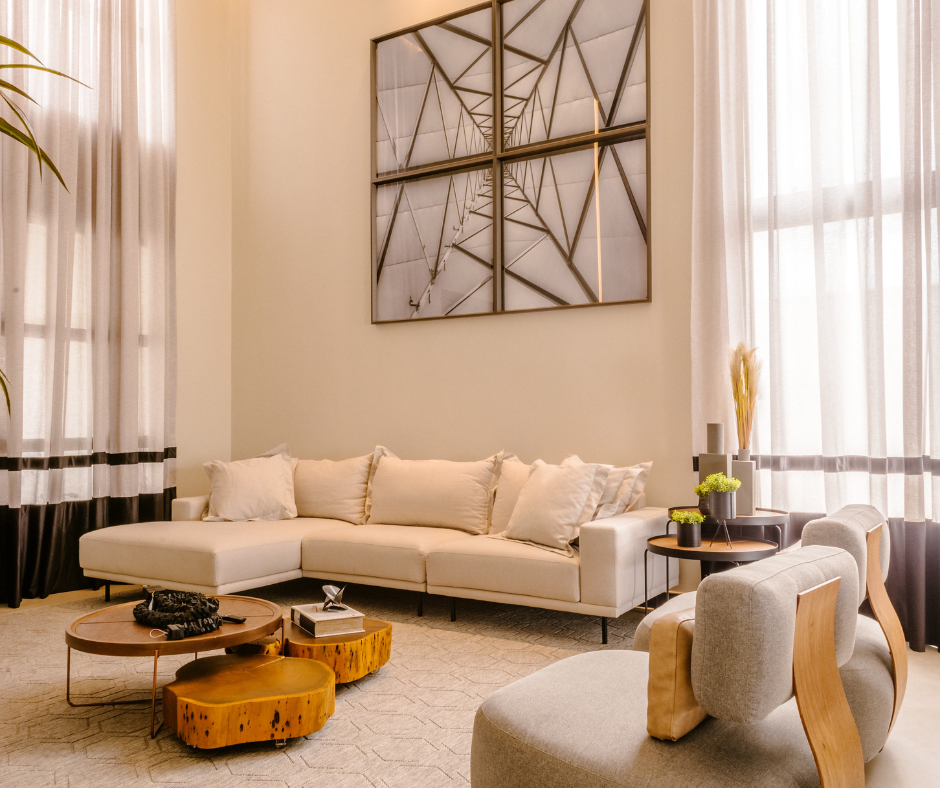
Moving Into a New House? What to Do First (Flooring Edition)
Share
The keys are in your hand, the boxes are stacked, and the excitement (and perhaps a little overwhelm) sets in. Moving into a new house is a thrilling adventure, but also a logistical marathon. While it's tempting to jump straight into decorating, knowing what to do first in your new home can save you time, money, and headaches down the line, especially when it comes to your flooring. Addressing your flooring needs before the furniture arrives and the unpacking begins is often the smartest move.
At Flooring Attic, part of Atlanta Flooring Design Centers, we've helped countless homeowners across the Southeast USA navigate their new home transitions. We're here to guide you on what to do first to ensure your floors are perfect from day one.

Before the Move-In Frenzy: Prioritize Your Floors
Here's why tackling flooring early is a game-changer:
Empty Canvas Advantage: Installing or updating flooring in an empty house is significantly easier, faster, and more cost-effective. There's no furniture to move, protect, or work around, leading to a smoother installation and a cleaner finish.
Less Damage Risk: New flooring is vulnerable. Installing it before heavy furniture is dragged in minimizes the risk of immediate scratches, dents, or scuffs.
Dust and Debris Control: Flooring installation generates dust and debris. Doing it before your personal belongings are unpacked keeps your furniture, clothes, and cherished items clean.
Design Freedom: With an empty space, you have a clearer vision of the entire room, making it easier to choose the right style, color, and material without being influenced by existing decor.
Health and Hygiene: If you're replacing old flooring (especially carpet), doing it before moving in means you're eliminating potential allergens, dust, and odors before you start living in the space.
So, Moving into a New House? What to Do First for Your Floors:
Here's a strategic checklist for new homeowners:
1. Assess the Existing Flooring (Critically!)
- Condition: Walk every room. Are there visible signs of wear, damage (scratches, dents, cracks), stains, or odors? Are any areas buckling, gapping, or loose?
- Age: How old is the current flooring? Even if it looks okay, older materials might be nearing the end of their lifespan and could fail sooner than you'd like.
- Style: Does the current flooring match your aesthetic vision for the new home? Is it a color or material you genuinely love, or just something you can "live with"?
- Functionality: Does the flooring suit the room's purpose? For example, is there carpet in a high-moisture bathroom? Is there fragile wood in a high-traffic entryway?
- Subfloor: If there are obvious issues with the existing flooring, consider if they might be symptomatic of underlying subfloor problems that need addressing.
2. Decide: Keep, Deep Clean, or Replace?
- Keep: If the flooring is in excellent condition, relatively new, and matches your style, a professional deep clean might be all it needs. This is especially true for hard surfaces.
- Deep Clean: For carpets that are generally sound but appear dull or have minor stains, a professional steam cleaning can work wonders. For hard surfaces, a thorough cleaning and re-polishing/sealing might suffice.
- Replace: If the flooring is significantly damaged, very old, doesn't suit your style, or poses health/safety concerns, replacement is the best option.
3. Prioritize Rooms for Replacement (If Replacing)
You might not need to replace all flooring at once. Prioritize based on:
- Functionality: Areas that need immediate attention due to moisture (bathrooms, kitchens, laundry rooms), or high traffic (entryways, main hallways, living areas).
- Impact: Rooms that will be used most immediately or have the biggest aesthetic impact (e.g., master bedroom, main living area).
- Budget: Start with the most critical areas and plan for future phases if needed.
4. Explore Flooring Options (The Fun Part!)
- Think About Your Lifestyle: Pets, kids, allergies, climate – all these influence the best flooring choice.
- Consider Each Room's Needs: Hard-wearing, waterproof options for kitchens/baths (like Luxury Vinyl Plank/Tile or porcelain tile); comfortable and quiet for bedrooms (carpet or LVP); durable and stylish for living areas (hardwood, LVP, laminate).
- Aesthetics: What mood do you want to create? Light and airy? Warm and cozy? Modern and sleek?
- Visit a Showroom or Use Shop-at-Home Services: See samples in person. Better yet, leverage services like Flooring Attic's shop-at-home option to see samples in your new home's lighting, with your natural light and existing paint colors/fixtures.
5. Get Accurate Estimates and Schedule Installation
- Measure Carefully: Professional measurement is key to avoiding waste or shortages.
- Detailed Quotes: Ensure your estimate includes material cost, installation, subfloor prep, old flooring removal, and any other associated fees.
- Schedule Pre-Move-In: Book your installation before your official move-in date. Aim for at least a few days, or ideally a week, to allow for off-gassing (especially for carpet) and drying times for adhesives, if applicable.
By taking the time to address your flooring needs before unpacking a single box, you're setting the stage for a smoother transition, a healthier living environment, and a home that truly reflects your style from the ground up.
Making Your New House Home: Start with the Right Floors from Flooring Attic
Moving into a new house is an exciting journey, and knowing what to do first can make all the difference. Prioritizing your flooring needs before the big move ensures a beautiful, functional, and hassle-free start in your new home. At Flooring Attic, part of Atlanta Flooring Design Centers, we simplify this process for homeowners across the Southeast USA.
Visit our showroom in Buford, GA, to explore a vast selection of quality flooring products. Our experts are ready to guide you through the best options for your new space, offering excellent service and pricing. Established in 1985, we're a premier flooring supplier for new homes throughout the Southeast.
